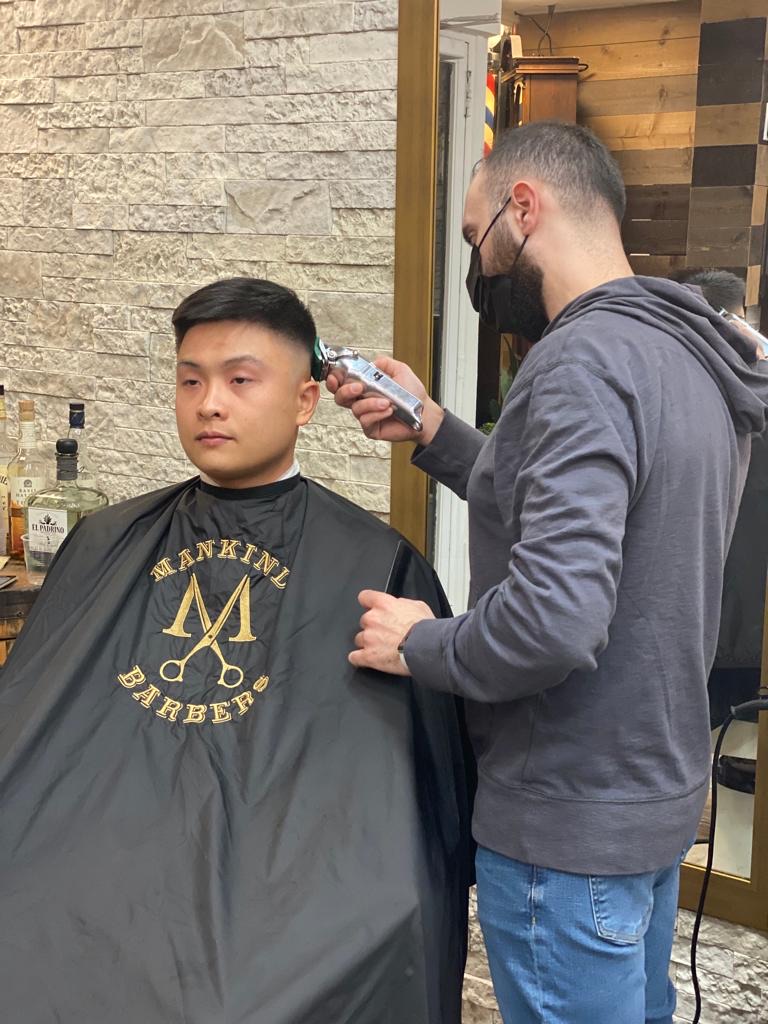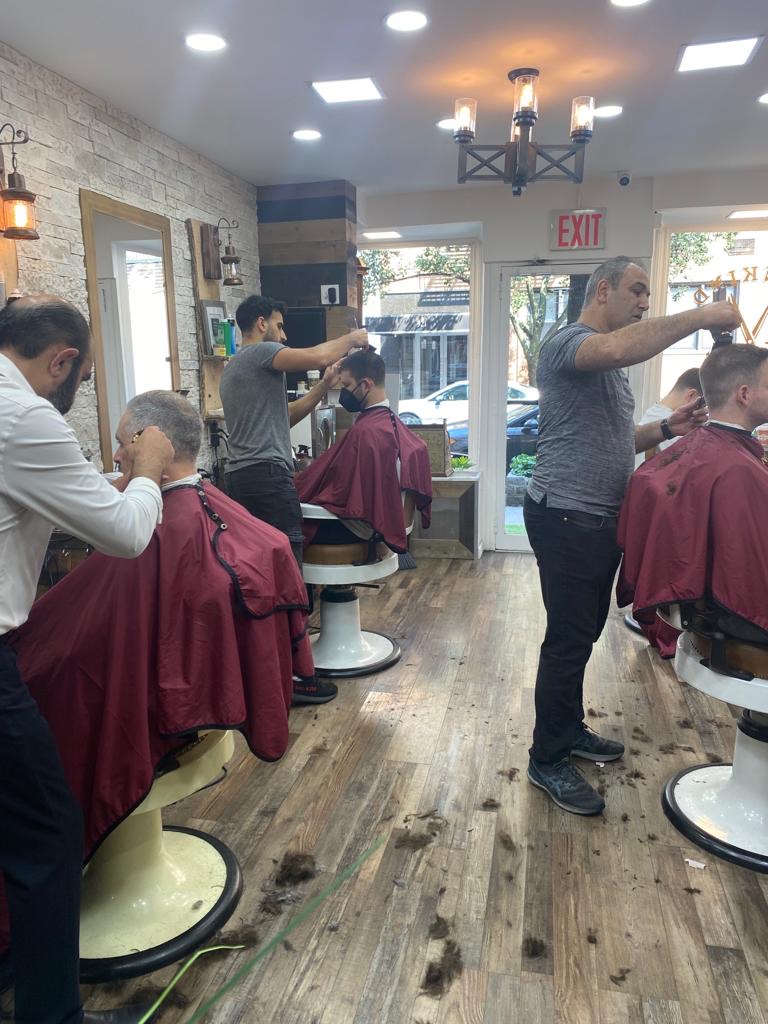Frequently Asked Questions
To maintain a fade haircut, it is generally recommended to visit the barber every two to three weeks. This frequency ensures that the clean, sharp lines and the gradual tapering effect of the fade remain crisp and well-defined. As the hair grows, the seamless transition from short to longer lengths can become less distinct, leading to a more unkempt appearance. Regular visits to the barber help in keeping the fade looking fresh, as the stylist can expertly blend the different lengths using clippers and scissors, maintaining the desired gradient. Additionally, frequent trims prevent the hair from becoming too long on top, which can disrupt the overall balance and symmetry of the style. By adhering to this schedule, one can ensure that the fade remains a polished and stylish haircut, showcasing the precision and artistry involved in its creation.
For daily styling of a fade haircut, a variety of hair products can be utilized to achieve a polished and versatile look. Pomade is a popular choice, offering a medium to high hold with a shiny finish, perfect for creating sleek, defined styles. For those seeking a more natural, textured appearance, a matte clay or paste can provide a strong hold without the shine, allowing for a more casual, tousled look. Hair gel, with its firm hold and wet finish, is ideal for maintaining a structured style throughout the day, especially for high fades or skin fades. Additionally, a lightweight styling cream can be used to add volume and control to longer hair on top, while a sea salt spray can enhance natural waves and add body. To ensure the fade remains sharp and clean, a quality trimmer or clipper can be used for regular touch-ups. Finishing with a light mist of hairspray can help lock in the style, providing long-lasting hold and resistance to humidity. Each of these products caters to different hair types and desired outcomes, making them essential tools for maintaining the crisp, modern aesthetic of a fade haircut.
To prevent a fade haircut from looking uneven as it grows out, one should consider maintaining a regular grooming routine that includes frequent touch-ups and trims. Scheduling consistent visits to a skilled barber can help manage the transition between haircuts, ensuring that the fade remains balanced and the hair grows out uniformly. Utilizing high-quality hair products, such as pomades or styling gels, can aid in controlling unruly strands and maintaining the desired shape. Additionally, incorporating a nourishing hair care regimen with moisturizing shampoos and conditioners can promote healthy hair growth, reducing the appearance of split ends and uneven texture. By paying attention to the natural growth patterns and density of the hair, one can strategically style the hair to minimize the appearance of unevenness, ensuring a seamless and polished look as the fade grows out.
To maintain a sharp fade haircut between barber visits, one can employ several techniques using tools like clippers, trimmers, and blending shears. First, it's essential to have a quality pair of clippers with adjustable guards to ensure precision when trimming the hair. Starting with a higher guard, one can gradually work down to a lower guard to blend the fade seamlessly, paying close attention to the transition zones around the temples and nape. Using a handheld mirror can help check the symmetry and evenness of the fade from different angles. For a more polished look, a trimmer can be used to clean up the hairline and sideburns, ensuring crisp edges. Additionally, blending shears can help soften any harsh lines, creating a smoother gradient. It's also beneficial to use a comb to lift the hair while trimming, ensuring an even cut. Regularly moisturizing the scalp and using a leave-in conditioner can keep the hair healthy and manageable, making the touch-up process more effective.
Different hair types significantly influence the maintenance of a fade haircut, as each type presents unique challenges and requirements. For instance, individuals with coarse or curly hair may find that their fade requires more frequent touch-ups to maintain the sharp contrast between the faded sections and the longer hair, as the natural curl pattern can cause the hair to appear less defined over time. In contrast, those with straight or fine hair might experience a quicker loss of volume, necessitating the use of volumizing products or texturizing sprays to maintain the desired silhouette of the fade. Additionally, individuals with wavy hair might need to employ specific styling techniques, such as blow-drying with a diffuser or using a curl-enhancing cream, to ensure the fade transitions smoothly from the shorter to longer sections. The density and porosity of the hair also play crucial roles; high-density hair may require more frequent thinning to prevent the fade from looking bulky, while low-porosity hair might need moisturizing products to prevent dryness and maintain a sleek appearance. Overall, the maintenance of a fade haircut is a dynamic process that must be tailored to the individual's specific hair type, texture, and growth patterns to ensure the style remains crisp and well-defined.

